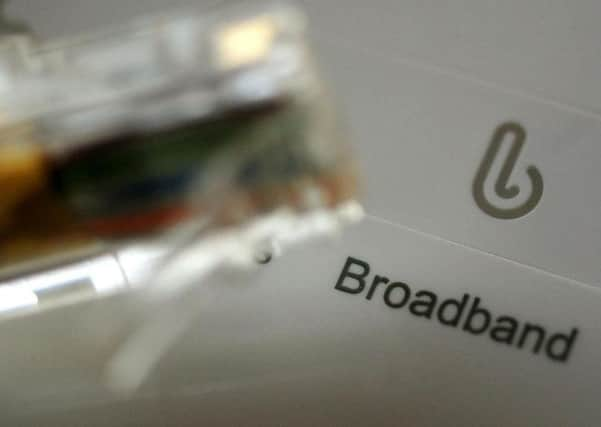Rural-urban divide exists over Government's superfast broadband roll out, new report shows


Some 94.9 per cent of homes and businesses across Yorkshire - some 377,303 premises - are covered by the roll out but there is a five per cent swing in availability of speedy connections between Yorkshire’s rural and urban heartlands.
Superfast broadband is more widely available in South and West Yorkshire, with coverage extended to over 96 per cent in both areas, but in North and East Yorkshire, coverage is just below 91 per cent in each area.
Advertisement
Hide AdAdvertisement
Hide AdAcross the region as a whole, just 42.1 per cent of premises that can connect to superfast broadband have done so.
Nonetheless, Digital Minister Margot James said Yorkshire had enjoyed some of the biggest connectivity gains in the country.
“Our rollout of superfast broadband across the UK has been the most challenging infrastructure project in a generation but is one of our greatest successes,” she said.
“This is even more so in Yorkshire which has seen some of the biggest increases of superfast coverage in the wole of the UK.
Advertisement
Hide AdAdvertisement
Hide Ad“We know there’s still more to do though, and are reaching thousands more homes and businesses every week.”
Ms James may be positive about the achievements to date but further analysis of the figures shows that Yorkshire has the lowest take up rate of superfast broadband, where it is available, of all regions in England.
Of those premises that are connecting to available networks, the appetite for greater connectivity seems strongest in rural areas.
Just 27 per cent of eligible homes and businesses in South Yorkshire are connected and 39 per cent in West Yorkshire, but in North and East Yorkshire, take up is 50 per cent and 47 per cent respectively.
Advertisement
Hide AdAdvertisement
Hide AdAccording to Tim Breitmeyer, president of the Country Land and Business Association (CLA) which has continuously lobbied for better connectivity for rural businesses, “rural areas are not able to participate in the digital revolution as fully as in urban areas”.
The Government reports that nationally, superfast broadband is available to 95.39 per cent of premises, of which 45 per cent are connected, and in total the roll out, which began in 2012, has seen connected businesses record a £9bn increase in turnover since.
Mr Breitmeyer said: “This research vindicates the CLA’s position on the value that superfast broadband can bring to our rural economy. Despite the progress made on the roll-out of superfast broadband, the research also highlights the disparity between broadband in urban areas in comparison to rural areas.
“Together with broadband, 4G mobile coverage is essential for services in 21st century Britain.”
Advertisement
Hide AdAdvertisement
Hide AdAccording to a new independent assessment of its impact published today, between 2012 and 2016, the roll out of superfast broadband has delivered a £690m net increase in Gross Value Added to the UK economy, leading to almost 9,000 less people claiming jobseekers allowance and the creation of 49,000 jobs.
The report adds that the roll out has produced a £12.18 return in benefits for businesses for every £1 invested, and that there is a “strong indication” that take up rates have encouraged telecommunications companies to expand their own commercial broadband projects.